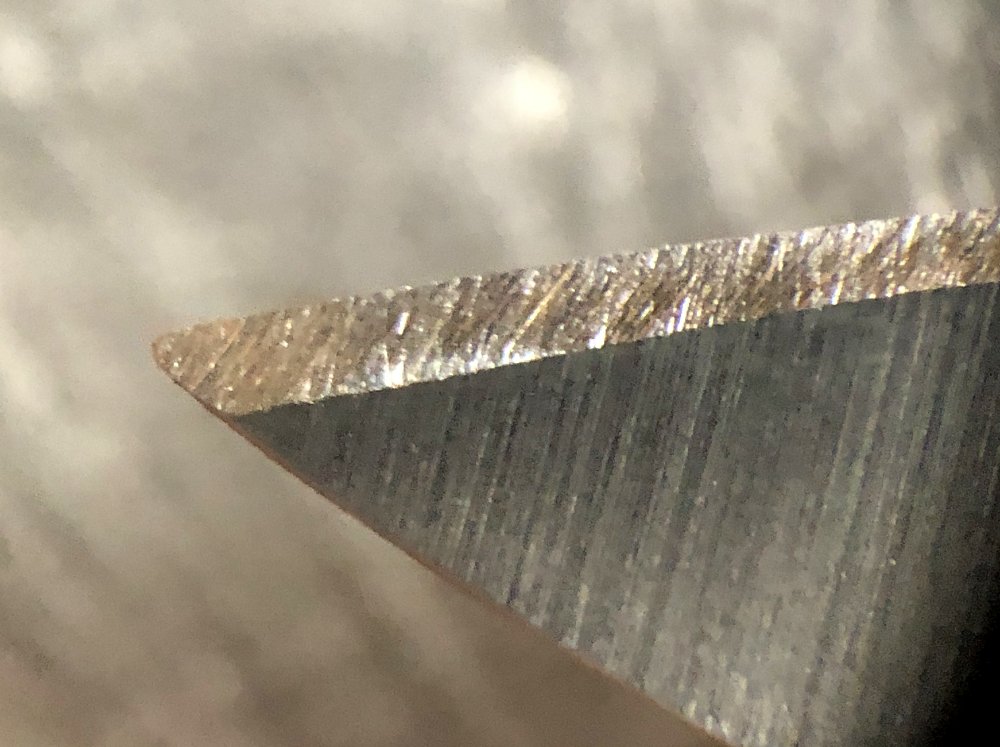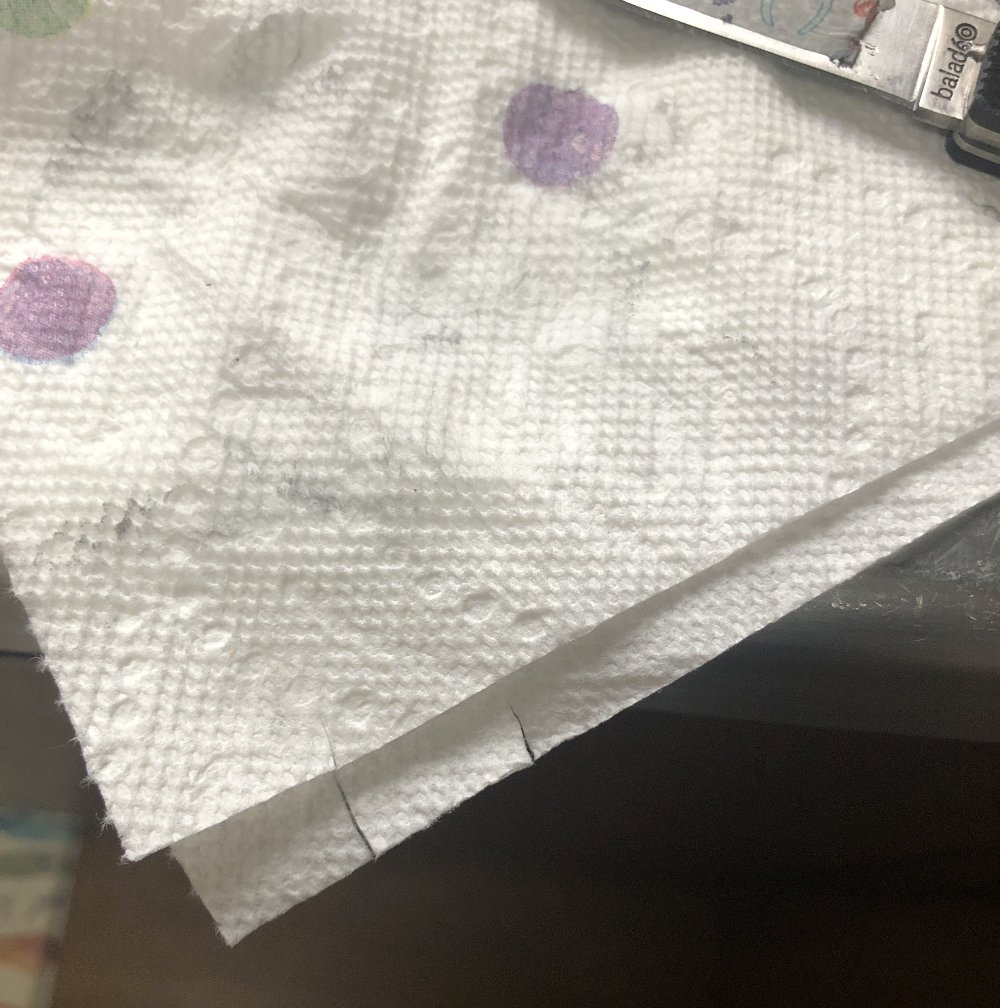7. Set the blade on the table
Again find a position where the knife can be held stably and comfortably. Edge Pro stage magnet helps tremendously in this regard. I cannot live without it! (thanks
@krazichinaman for heads-up)
Tips: Remember how you hold the blade on the table and keep the position throughout the sharpening session.
Lesson learned: I shifted the position during grit progression. The tip was the most shifted point. That changed the sharpening angle at the tip (to greater angles over time). I ended up a dull tip because only finer stones touched the edge there.
8. Initial grinding with the coarsest stone
I use back and forth motions to remove some metal from one side of the blade, probably like 10 strokes.
Just a tiny bit of pressure to the blade, in addition to the weight of the stone and the handle.
After 10 or so strokes, I check how far the scratches away from the edge.
If they are too far, I do 10 more strokes and check the scratches again.
As you proceed, you would notice areas where scratches are farther away from the edge than other areas.
Typically, you would have under-ground areas near the tip and heel (see 10).
Tips: Make sure that the stone grinds the heel area sufficiently. Do not drop the stone off the tip. This will round the tip. Stop the stone when the tip reaches the midline of the stone. Use light reflection or a loupe to spot these problem areas. Do not grind too much at this point. I would not let the stone to touch the edge yet.
Lesson learned: I have rounded the tips of many blades.....
9. Clean the stone
Rinse the stone with soapy water.
Wipe the stage and the blade with paper towel.
I do this every time I inspect the edge.
Lesson learned: If you are lazy and don't clean them, you will have scratches on the blade. Also, the final finish may not be clean because coarse grits may remain throughout the session, especially for polished finish.
10. Aligning the scratch pattern
Now you know which areas need more attention.
So focus on these areas to grind with the coarsest stone.
The goal here is to make the scratches away the same distance from the edge.
(What's visible here are the micro bevel, original edge bevel, and new scratches by the #150 stone from left to right)
Tips: These areas can be quite small. In that case, I use a corner of the stone to grind specific spots. When you have a sopt near the tip, use very short motions to grind and avoid rounding the tip.
This is somewhat typical. You can see that the stone already grinds the tip but not the apex anywhere else.
Also, you tend to have issues near the heel. Again, use a corner of the stone. Sometimes you have to remove some materials off from the choil or ricasso. Below shows how I do it.
Left, the entire width of the stone grinds the blade. Right, by tilting the stone, one corner or edge of the stone grinds the blade. You can grind a small area this way. Sorry for the bad illustrations!
Also a video demonstration.
This is a video tutorial touching on the same issue (thanks
M
maximus83
!)
Lesson learned: I ignored these areas and just sharpened the entire edge bevel regardlessly. This resulted in removing more materials off from other areas and altered blade shape.


















